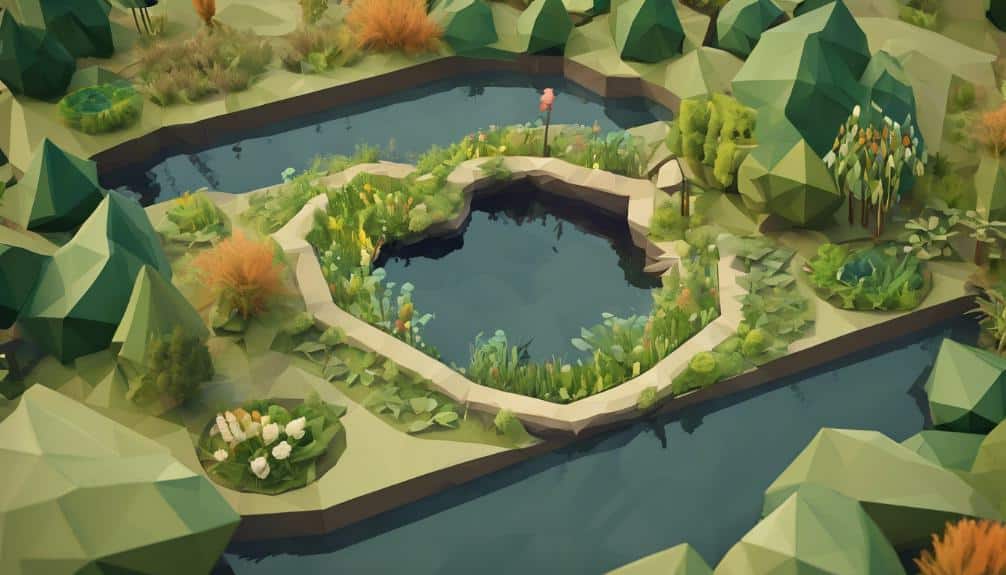Permaculture design creates sustainable ecosystems. It involves thoughtful planning and understanding of nature’s patterns.
This process transforms gardens into ecosystems that support life and mirror natural processes.
Let’s explore the essential steps to achieve this.
Here is a guide we wrote on how you can use companion planting techniuqes to have more benefits. This technique might come handy for your permaculture garden too. And why not to add Elderberry and Possum Grapes to your permaculture garden plan.
Defining Your Permaculture Vision
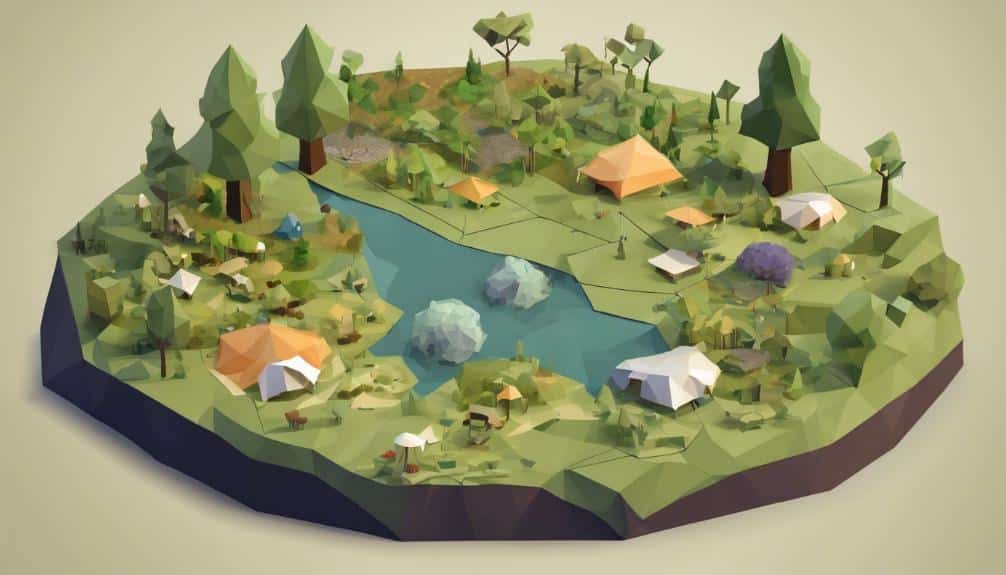
Defining your sustainable vision is crucial for effective permaculture design. Identify priorities such as food production, wildlife habitats, or biodiversity. Focus on what matters most to you. Set clear goals. Prioritize essential elements in your vision. This approach guides your design. Dream big but consider practical limits. Trust your instincts.
Imagining Your Food Forest Design
In designing a food forest, you combine water, soil health, and plant guilds to create a balanced ecosystem.
- Creative Visualization: You use your imagination to design a sustainable food forest.
- Design Inspiration: You look to natural ecosystems for ideas to make a thriving food forest.
- Layered Integration: You mix different plant species to improve productivity and balance.
- Harmony and Abundance: Your goal is to create a design that supports a rich environment for plants, animals, and humans.
This approach aims to develop a food forest that supports and enriches the land and its inhabitants.
Site Assessment and Base Mapping
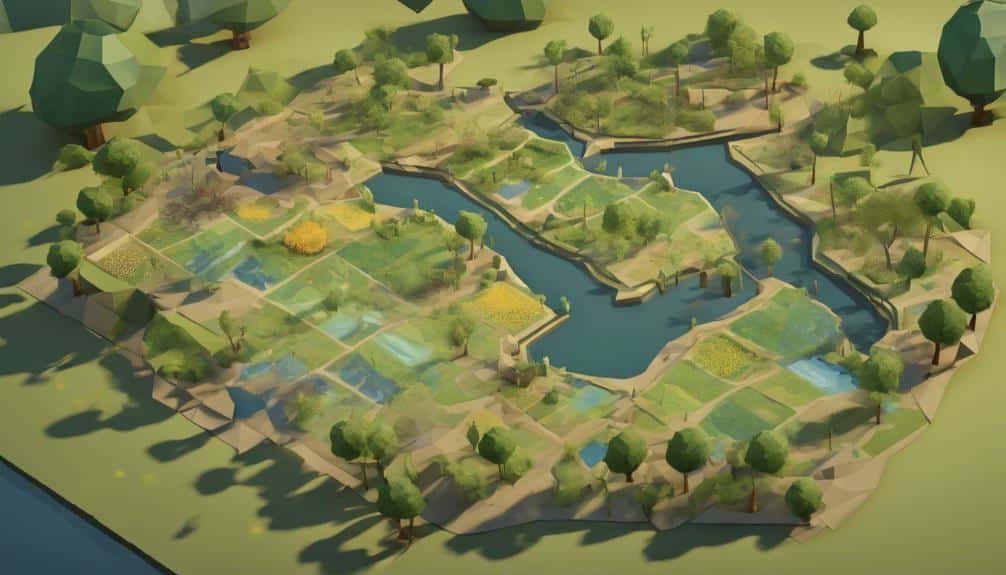
Upon arrival at the site, I start by assessing the land for our permaculture projects. I create a detailed base map. I note sunlight patterns, wind direction, and existing vegetation.
I document all observations, focusing on the site’s strengths and challenges. This approach helps understand the landscape for designing.
This initial phase is crucial for planning a sustainable permaculture ecosystem.
Water Management Strategies
Adopting advanced water management techniques is essential for a healthy and sustainable food forest.
- Rainwater Harvesting: This involves collecting rainwater to water plants.
- Soil Hydration Techniques: This includes methods to help soil keep moisture for plants.
- Earthworks for Water Management: This involves creating structures to manage water efficiently.
- Utilizing Gray Water: This means using recycled household water for watering plants.
Building Soil Health and Nutrition

Building soil health improves plant growth and nutrition. I use wood chips to keep soil moist, prevent weeds, and increase microbes.
Including animals helps mix and enrich the soil. This method imitates nature, enhancing soil fertility.
Focusing on soil health and plant-animal connections ensures a productive food forest.
Creating Plant Guilds for Mutual Benefits
My food forest grows well because I group plants together that help each other. This makes the soil healthy and helps plants grow better.
- Plant Partnerships: I put plants together that share resources and help each other grow.
- Symbiotic Relationships: Each plant has a role. They all help the whole group do well.
- Collaborative Planting: I carefully choose where to put each plant. This makes a balanced and varied ecosystem.
- Diverse Ecosystems: Mixing different plants makes the system strong and productive. It helps plants support each other better.
In my permaculture garden, these groups of plants are very important. They help every plant do its best. This shows how working together is good in nature.
Establishing Planting Plans and Consortiums
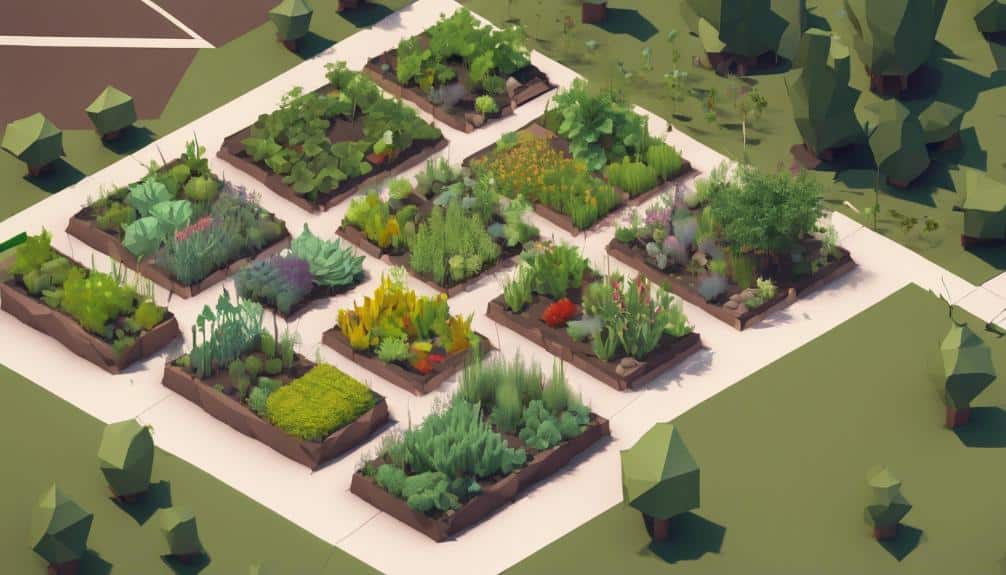
In my permaculture garden, I plan plantings and create groups to help plants thrive together and make the ecosystem strong.
I choose plants that help each other by improving soil, controlling pests, and keeping a good climate. This way, my garden keeps itself healthy. I design groups to use space well and get food all year.
This method uses time, space, and height to let plants live well together. Here’s a simple table about my garden planning:
| Aspect | Description | Importance |
|---|---|---|
| Complementarity | Plants helping each other | Makes ecosystem strong |
| Successional Planting | Planting at the right time | Uses space well, increases food |
| Biodiversity | Many different plants | Keeps ecosystem stable |
| Microclimate Control | Positioning plants to control climate | Keeps plants healthy |
| Nutrient Cycling | Plants improving soil | Keeps soil healthy long-term |
This method focuses on plant cooperation, smart planting times, plant variety, climate management, and soil health to make a self-supporting garden.
Implementation and Maintenance Guidelines
To ensure a permaculture garden thrives, follow these steps:
- Maintenance Routines: Check plant health, water, and soil regularly. This keeps the ecosystem healthy.
- Harvest Planning: Schedule harvests to get the most yield without harming future growth.
- Pest Management: Use natural methods and companion planting to control pests.
- Seasonal Care: Change gardening practices with the seasons to help plants grow better.
Trusting Your Permaculture Intuition
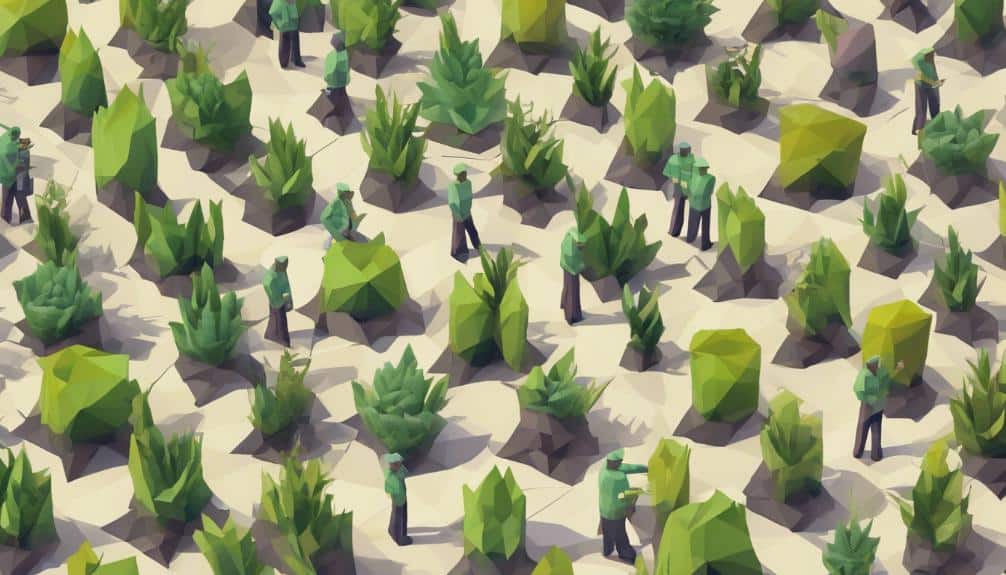
In permaculture design, intuition guides decision-making. This approach connects deeply with the land. Intuitive choices help in creating effective ecosystems. Trusting instincts improves the selection of plant guilds and the placement of water systems. It also aids in organizing the food forest.
Using intuition respects the environment and encourages creativity. Listening to inner guidance helps achieve a sustainable permaculture paradise. This method combines personal vision with nature’s wisdom.
FAQ
How Can I Incorporate Wildlife Habitat Into My Food Forest Design?
I’ll create wildlife corridors and pollinator sanctuaries in my food forest design by enhancing habitat diversity. I’ll prioritize species coexistence, inviting a variety of creatures to thrive harmoniously. By integrating these elements systematically, I’ll foster a sustainable ecosystem.
What Are Some Creative Ways to Involve the Local Community in Maintaining the Food Forest?
To involve the local community in maintaining the food forest, I engage through community events, workshops, and volunteer programs. We share knowledge, plant together, and build a network of passionate individuals dedicated to sustainable practices.
How Can I Integrate Art and Aesthetics Into the Design of My Permaculture Paradise?
When designing my permaculture paradise, I integrate art with landscaping by incorporating vibrant art installations. Aesthetic plantings and sculptures enhance the beauty, creating a harmonious blend of nature and creativity that inspires sustainable living.
Are There Any Specific Considerations for Designing a Food Forest in a Urban Environment?
When designing a food forest in an urban setting, I focus on vertical gardening and rooftop farming to maximize space. Edible landscaping and urban foraging are key, ensuring a sustainable and fruitful ecosystem for continuous yields.
How Can I Utilize Technology and Automation to Enhance the Efficiency of My Food Forest Maintenance Practices?
To enhance my food forest efficiency, I’ll use smart irrigation for water conservation, robotic weeding for weed control. Employing autonomous drone monitoring and sensor technology will aid in tracking plant health and soil conditions.
